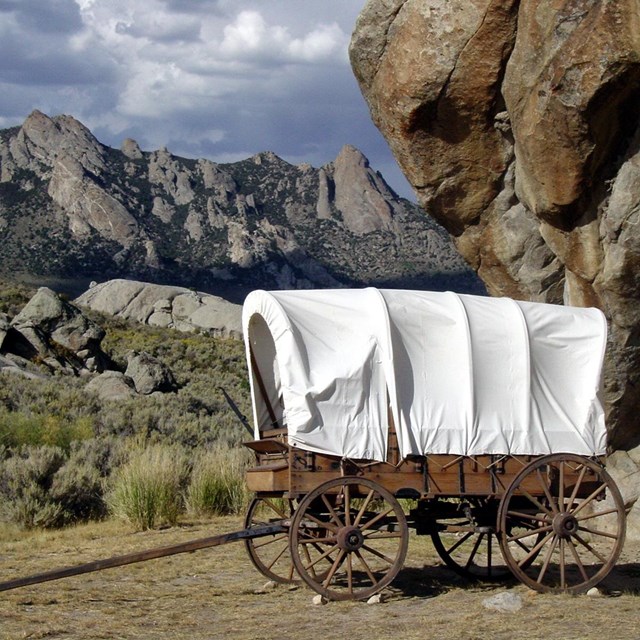Part of a series of articles titled Death Came A-Knockin’: Freak Accidents on the Westering Trails.
Article
Child’s Play: Freak Accidents on the Westering Trails

Public Domain
Laudanum is a tincture made from powdered opium, morphine, and codeine. Today it is available in the US only by prescription, but in the 19th century it was an inexpensive patent medicine used to quiet agitated minds, ease fever and pain, and relieve diarrhea. An overdose causes the victim to stop breathing, lapse into coma, and die.
That’s what happened to six-year-old Salida Jane Henderson, called “Lettie,” while she camped with her family in Nevada’s Black Rock Desert along the Applegate Trail in 1846. Her sister Lucy Ann, age 11 at the time, recalled years later:
I shall never forget that camp. Mother had brought some medicine along. She hung the bag containing the medicine from a nail on the sideboard of the wagon. My playmate, the Currier girl, who was of my own age, and I discovered the bag, and so I decided to taste the medicine. I put a little on my tongue, but it didn’t taste good, so took no more. The currier girl tasted it, made a wry face, and handed the bottle back. My little sister, Salita Jane, wanted to taste it, but I told her she couldn’t have it. She didn’t say anything, but as soon as we had gone she got the bottle and drank it all. Presently she came to the campfire where Mother was cooking supper and said she felt awfully sleepy. Mother told her to run away and not bother her, so she went to where the beds were spread and lay down. When Mother called her for supper she didn’t come. Mother saw she was asleep, so didn’t disturb her. When Mother tried to awake her later she couldn’t arouse her. Lettie had drunk the whole bottle of laudanum. It was too late to save her life.
Lettie’s father fashioned a small coffin from the boards of a camp table, and the family buried her there in the desert, with the brooding Black Rock as her tombstone.
Trail lore recounts that Lucy’s playmate, Elizabeth Currier, carried a beaded purse with a rose worked into the design. Elizabeth, unable to find any wildflowers, cut the rose from her purse to brighten the little girl’s bleak grave. A small, beaded purse with a hole cut into it, believed to be Elizabeth’s, today is among the collections of the Schmink Memorial Museum of Lakeview, Oregon.
Last updated: January 27, 2024



